#13 July 1917
Text














BOBSTROLOGY
A completely serious presentation by @pegasusdrawnchariots and oatflatwhite
written version under the cut!
♈️Patrick O’Keefe [April 3 1926]
♈️Robert Sink [April 3 1905]
♈️John Julian [5 April 1924]
♈️Renée Lemaire [10 April 1914]
♈️James Miller [11 April 1924]
♈️Walter “Smokey” Gordon [April 15 1920]
♉️~Ronald Speirs [April 20 1920]
♉️Alton More [April 22 1920]
♉️Henry Jones [27 April 1924]
♉️Edward “Babe” Heffron [May 16 1923]
♉️John Martin [May 12 1922]
♉️Joseph Liebgott [May 17 1915]
♉️Norman Dike [May 19 1918]
♉️William Guarnere [April 28 1923]
♊️David Webster [June 2 1922]
♊️George Luz [June 17 1921]
♊️Roy Cobb [June 18 1914]
♋️Frederick “Moose” Heyliger [June 23 1916]
♋️Albert Blithe [June 25 1923]
♋️Donald Hoobler [28 June 1922]
♋️Thomas Meehan [8 July 1921]
♋️John Janovec [9 July 1925]
♋️Robert “Popeye” Wynn [July 10 1921]
♋️James "Moe" Alley [July 20 1922]
♌️~Burton “Pat” Christenson [July 23 1922]
♌️Eugene Jackson [29 July 1922]
♌️Donald Malarkey [July 31 1921]
♌️Edward Tipper [3 August 1921]
♍️Floyd Talbert [August 26 1923]
♍️Alex Penkala [August 30 1922]
♍️William Dukeman [3 September 1921]
♎️Eugene Roe [October 17 1922]
♎️Harry Welsh [September 27 1918]
♎️Lewis Nixon [September 30 1918]
♎️Ralph Spina [October 5 1919]
♎️Thomas Peacock [October 9 1923]
♏️Denver “Bull” Randleman [November 20 1920]
♑️Lynn “Buck” Compton [December 31 1921]
♑️Antonio Garcia [January 17 1925]
♒️Richard "Dick" Winters [January 21 1918]
♒️Herbert Sobel [January 26 1912]
♒️Carwood Lipton [January 30 1920]
♒️Warren “Skip” Muck [January 31 1922]
♓️Lester Hashey [23 February 1925]
♓️Charles “Chuck” Grant [1 March 1922]
♓️Robert Strayer [March 2 1912]
♓️Wayne “Skinny” Sisk [March 4 1922]
♓️Frank Perconte [March 10 1917]
♓️Darrell “Shifty” Powers [March 13 1923]
♓️Joseph Toye [March 14 1919]
6 Aries 🥉
8 Taurus 🥇
3 Gemini
7 Cancer 🥈
4 Leo
3 Virgo
5 Libra
1 Scorpio
0 Sagittarius 🥄
2 Capricorn
4 Aquarius
7 Pisces 🥈
10 🔥
13 🪨
12 💨
15 💧
20 cardinal
17 fixed
13 mutable
22 masculine
28 feminine
#band of brothers#hbo war#bobedit#hbowaredit#bobstrology#astrology#liz makes things#disclaimer: our interpretation is ironclad. we alone decide the law. argue w the wall.#< we say as an aries and scorpio with renee and bull in our corners <3
192 notes
·
View notes
Text

King George V, Edward, Prince of Wales, and General Julian Byng and on the Butte de Warlencourt, Le Sars, 13 July 1917.
#ww1#ww1 poetry#ww1 history#history#historical photos#american history#military history#world war i#world war one#the great war#The First World War#the great war 1917#historical photography#photography#vintage photography
85 notes
·
View notes
Text


















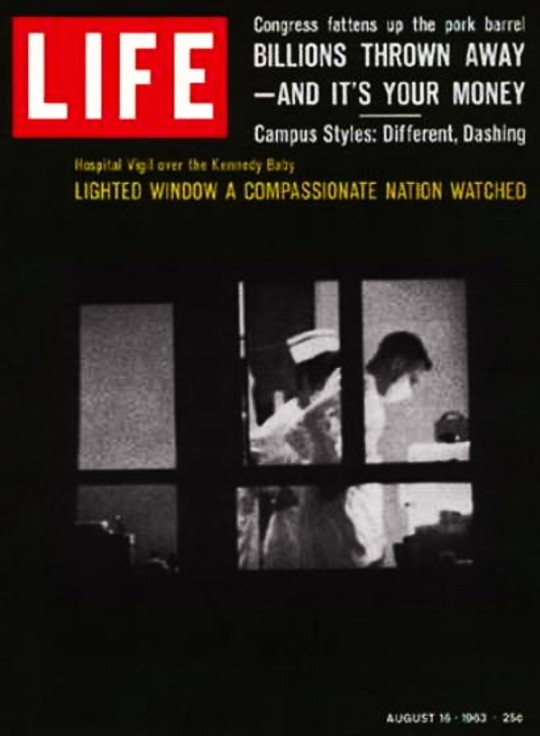

The Kennedys' on LIFE magazine (Part 1/3)
"Senator Goes A-Courting" (John F. Kennedy & Jacqueline Bouvier), July 20, 1953.
"Author Kennedy" (John F. Kennedy), March 11, 1957.
"Jacqueline, Caroline and Jack Kennedy", April 21, 1958.
"Jackie Kennedy A Front Runner's Appealing Wife" (Jackie & John F. Kennedy), August 24, 1959.
"Hubert And Jack In Wisconsin" (John F. Kennedy), March 28, 1960.
"The Victorious Young Kennedys" (Rose Kennedy, Jackie Kennedy, John F. Kennedy and Jean Kennedy Smith), November 21, 1960.
"The Kennedys And Their Son At Christening" (John F. Kennedy, Jackie Kennedy & John F. Kennedy Jr,), December 19, 1960.
"The Kennedy Inauguration" (John F. Kennedy & Jackie Kennedy), January 27, 1961.
"The Kennedys In Canada" (Jackie Kennedy), May 26, 1961.
"Kennedy In Paris" (John F. Kennedy), June 9, 1961.
"Any dangerous spot is tenable if brave men will make it so" (John F. Kennedy), August 4, 1961.
"The First Lady She Tells Her Plans For The White House" (Jackie Kennedy), September 1, 1961.
"Year-old JFK Jr. Plays with Gifts from Charles de Gaulle" (John F. Kennedy Jr.), November 24, 1961.
"Hard-headed, Hard-driving, Kid brother Capital's No.2 man, Bob Kennedy closes in" (Robert F. Kennedy), January 26, 1962.
"The Senate Seat Scramble In Massachusetts; Head on Collison of Three Political Clans: Eddie McCormack, Teddy Kennedy & George Lodge" (Edward M. Kennedy), June 29, 1962.
"Kennedy In Mexico City" (John F. Kennedy), July 13, 1962.
"The Fun Of Being Caroline" (Caroline Kennedy), September 7, 1962.
"Charming Album Of Jackie Growing Up" (Jackie Kennedy), April 26, 1963.
"Hospital Vigil Over Kennedy Baby: Lighted Window A Compassionate Nation Watched", August 16, 1963.
"President John F. Kennedy 1917-1963" (John F. Kennedy), November 29, 1963.
#on the cover#life magazine#the kennedys#john f. kennedy#jfk#jackie kennedy#caroline kennedy#rose kennedy#jean kennedy smith#john f. kennedy jr.#robert f. kennedy#rfk#edward m. kennedy#ted kennedy#1950s#1960s
75 notes
·
View notes
Text

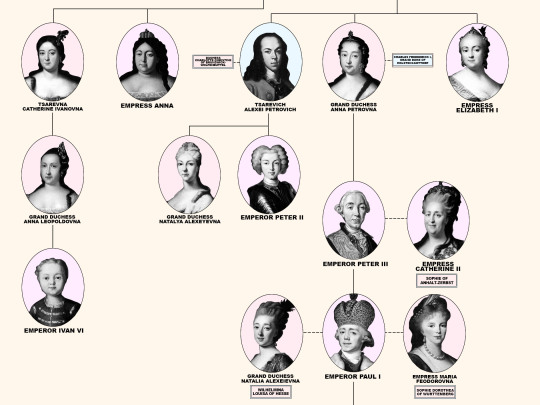
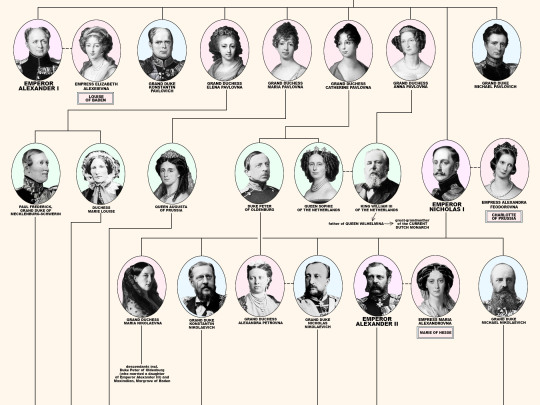
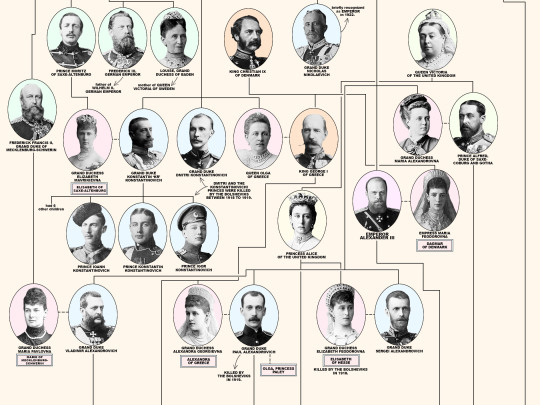

Members of the House of Romanov, the last reigning Dynasty of Russia.
From the first Romanov Russian Tsar Michael I (reigned 1613-1645) until the last Emperor Nicholas II (reigned 1894-1917). Including the 18 members of the house executed from 1918 until 1919; Grand Duke Michael Alexandrovich (13 June 1918). Nicholas II, Empress Alexandra Feodorovna, Grand Duchesses Olga Nikolaevna, Tatiana Nikolaevna, Maria Nikolaevna, Anastasia Nikolaevna, and Tsarevich Alexei Nikolaevich (17 July 1918). Grand Duchess Elizabeth Feodorovna, Grand Duke Sergei Mikhailovich, Prince Ioann Konstantinovich, Prince Konstantin Konstantinovich, Prince Igor Konstantinovich, and Prince Vladimir Paley (18 July 1918). Grand Duke Paul Alexandrovich, Grand Duke Dmitri Konstantinovich, Grand Duke Nicholas Mikhailovich, and Grand Duke George Mikhailovich (28 January 1919).
#romanovs#history#nicholas ii#alexandra feodorovna#olga nikolaevna#tatiana nikolaevna#maria nikolaevna#anastasia nikolaevna#alexei nikolaevich#myedits#peter i#peter ii#Peter iii#peter iii#Catherine the great#tsar alexei i#tsar michael#tsar paul i#alexander i#alexander ii#alexander iii#nicholas i#ancestry
390 notes
·
View notes
Text
Edith Finch Timeline
So I'm still organizing my theories (honestly they're more like a list of unanswered questions than a coherent theory right now) but I think my timeline is pretty much complete now that I've had a chance to go back through the pet cemetery and add all those in.
I do some wild speculating about Odin here that has no canon basis, just spinning ideas.
Things to notice- Just how many deaths happen on or very near birthdays. Not always the birthday of the person who dies and not every time, but suspiciously often.
The pets almost seem to fill in the years when no one human died? Like everything in this game it's nothing definitive enough to base a solid theory on, but it is odd.
TIMELINE
1439 - Earliest possible beginning of the Finch Family Curse based on the Odin viewmaster reel, as this is 500 years prior to the invention of the first viewmaster.
1445 - If the Odin viewmaster is the Model E made in 1955 (which I think it is), this is the start of the curse instead. Not much is happening in Norway during this period, but Vlad the Impaler was at the top of his game this year?
~About 7 generations of Finches dying horribly happens here.~
1880 - Odin is born. At some point between now and his death he writes "The Mysteries of Death and the Thereafter" and "Joining the Great Majority" which both appear to be books about the afterlife.
1896 - Heroic Age of Antarctic Exploration begins with the Belgian Antarctic Expedition and won't end till after WWI. Expeditions are marked by depression, starvation, insanity and scurvy. Many famous expeditions are made by Norwegian teams. Odin is 16.
1911 - A Norwegian expedition is first to reach the South Pole. The British Scott expedition chasing the same goal are lost. Odin is 31.
28 July 1914 - WWI begins, Odin is 34. Norway, "The Neutral Ally", remains neutral on the war but due to economic pressure from Britain commits its merchant marine fleet (one of the largest in the world) to Britain's service. Half the fleet is sunk and 2000 seamen are killed. If Odin was a sailor, he likely served. Alternatively, he may have been one of the wealthy merchants who profited greatly during the war. He clearly has a great deal of money to burn by 1937.
June 17 1915 - Sven is born.
April 8, 1917 - Edie is born.
1935 - At some point between now and Dec 1937, Edie and Sven marry and Sven takes Edith's last name.
1936 - Ingeborg and her newborn Johann Finch die in an unknown manner. Odin is 56, Edie is 19, Sven is 17.
Jan 7 1937 - Odin sets sail for Washington.
Dec 1937 - Arrival on Orcas Island, death of Odin at 57. Molly is born, on the boat? In the Old House? Sven and Edie build the cemetery, and then the house.
1938 - Churpy the budgie joins the family.
1939 - Invention of the viewmaster, earliest point the Odin story could have been recorded.
Sep 1939 - Sep 1945 - WWII. Sven was 24, and may have served or been drafted.
1940 - Burpy the house finch joins the family.
1941 - Churpy dies.
1947 - Christopher the goldfish joins the family.
Oct 31 1947 - Halloween Baby Barbara
Sometime between 1937 and 1947 - Molly's unnamed gerbil joins the family.
Dec 13 1947 - Molly dies of apparent poisoning after eating mistletoe berries, on or very near her 10th bday. She relates hallucinating having become several animals, most notably a cat. Christopher the fish dies shortly after. The fate of her unnamed gerbil is unrecorded, as none of the unattributed headstones are of the right age, but presumably it dies eventually.
1948 - Burpy dies at 8.
April 25 1950 - Sam and Calvin are born.
Aug 26 1952 - Walter is born.
1952 - Lurpy the Cockatiel joins the family.
1955 - Viewmaster Model E released- If this is the one used for Odin's story, that puts the beginning of the curse at 1455.
1956 - Lucy the dog joins the family.
1959 - Bailey the (???) joins the family.
Oct 31 1960 - Barbara dies, allegedly murdered, on her 16th bday. Her boyfriend Rick disappears the same night. The version of her death shared in the game is notably extremely unreliable and raises numerous questions. Rick is seen in a leg cast using crutches. Walter is 8, Sam and Calvin are 10 and notably absent from reported events.
Sept 23 1961 - Calvin dies at 11 falling from a cliff. He is seen wearing a weathered and heavily autographed leg cast. His model shows him with a black eye and several cuts.
1962 - Zoe the (???) joins the family.
1963 - Lurpy dies at 11. (Cockatiels have a life expectancy of 20-25 years)
Aug 26 1964 - Sven dies on Walter's 12th bday, while making a dragon shaped slide. He's 49.
1968 - Walter enters the bunker. He's 16. Durpy the Dove joins the family.
May 7 1968 - Dawn is born.
1969 - Lucy the dog dies.
June 20 1969 - Gus is born.
1970 - Zoe dies
1971 - Purply the Budgie joins the family.
1974 - Coco the (???) joins the family.
Jan 12 1976 - Gregory is born
Dec 7 1977 - Kay files for divorce after arguing with Sam about the curse.
Dec 19 1977 - Gregory drowns in the bath a month before his 2nd bday
1978 - Shadow the cat joins the family.
1979 - Purply dies at 8.
1980 - Rob the Bearded Dragon joins the family. Bob the Snake joins the family.
1981 - Durpy dies at 13.
1982 - Oliver the rabbit joins the family.
Nov 8 1982 - Gus dies, crushed by debris from a storm during Sam's wedding to an unnamed woman.
July 16 1983 - Sam dies, kicked off a cliff by a deer. Dawn is 15.
1984 - Bob dies at 4.
1985 - Daisy the (???) joins the family.
1986-87 Dawn goes to India, meets Sanjay.
1988 - Shadow the cat dies.
Dec 27 1988 - Lewis is born. Furpy joins the family. Tucker the (???) joins the family
1989 - Oliver the rabbit dies.
1991 - Rob dies at 10. Furpy dies.
1992 - Zurpy the Owl joins the family.
May 19 1992 - Milton is born.
1993 - Charlie the cat joins the family. Daisy dies.
1994 - Durpy Jr the Dove joins the family.
1995 - Zurpy dies at 3. Schatzi the (???) joins the family.
Feb 14 1999 - Valentine's Baby Edith. Lowest tide in a thousand years allegedly allows Edie to access the Old House. At some point between now and Nov 2010, three unnamed gerbils join the family, and then die.
Feb 22 2002 - Sanjay dies in an earthquake, eight days after Edith's 3rd bday, Dawn and children return to Finch House. Dawn writes "To Teach and To Learn" at some point in the next few years. At some point between now and 2010, Dawn probably finds a stray cat and names it Molly.
Oct 23 2003 - Milton disappears.
Late 2003 to Early 2004 - Dawn searches for Milton, eventually gives up and seals the rooms for unknown reasons.
March 31 2005 - Walter leaves the bunker and dies, allegedly hit by a train. There are several strange inconsistencies surrounding the circumstances of his death.
2006 - Durpy Jr dies at 12.
2009 - Schatzi dies
Nov 21 2010 - Lewis dies of apparent suicide one month before his 22nd bday.
Nov 28 2010 - A week after Lewis's death, Dawn informs Edie they are leaving the house. After Edie attempts to give Edith a book containing a story about their family which Dawn violently rips away, Dawn flees the house with Edith immediately, leaving Edie and all her belongings behind.
(Molly the cat is not mentioned in regards to the move, so she may have died by this point, but she is not listed in the graveyard, so it's possible she was simply left behind. There is a taxidermy calico in Sam's room, but Sam was dead before Molly could reasonably have joined the family, so this is unlikely to be her. A cat is seen outside human Molly's room in 2016, which may prove she's still alive- but she'd be around 14 years old. An unlikely age for a cat abandoned outdoors for 7 years.)
Nov 29 2010 - Edie is found dead by nursing care workers, and may have killed herself by combining alcohol with her medication, intentionally or otherwise. She's 93, the only member of her family to live longer than her father, who died at 57.
Dec 5 2010 - The date on Edie's tombstone, a week after when she supposedly died.
May (around the 12-18th?) 2016 - Edith becomes pregnant.
Oct 12 2016 - Dawn dies of a chronic illness at 48. Edith is 16 and about 6 months pregnant.
Oct 13 - 19 2016 - Edith returns to the Finch House at 22 weeks pregnant.
Jan 18 2017 - Edith dies in childbirth a month before her 18th bday. Christopher is born (possibly named for Molly's goldfish?).
2027? - At some point in the future, a young Christopher returns to the house, which has changed since the last time it was seen. He is wearing a cast.
A note on unrecorded pets- There are additionally 5 (possibly 6?) unmarked pet graves in the cemetery. One of the blank stones presumably belongs to Rob the bearded dragon, who has a memorial in Edie's room but no gravestone. One is marked as a fish and another is a rabbit, with no names or dates. One is a knocked over and unreadable sign of the same kind used for the birds, indicating it may be an otherwise unrecorded bird. There is also a statue of a frog- the knocked over sign may instead refer to an unrecorded pet frog, or the frog statue might be a separate gravestone, or simply a decoration. This leaves one blank headstone with no indication of what might lie beneath it. Let's assume it's a mass grave for gerbils.
57 notes
·
View notes
Photo

On this day, 13 July 1917, thousands of workers joined a spontaneous strike in São Paulo following the police killing of a 21-year-old shoemaker, José (or Antonio) Martínez, at a demonstration against the high cost of living two days previously. The stoppage soon became a general strike, and workers could only be persuaded to return to work three days later after being given a 10% pay increase. Read more about this dispute and hundreds of others in our book, Working Class History: Everyday Acts of Resistance & Rebellion: https://shop.workingclasshistory.com/products/working-class-history-everyday-acts-resistance-rebellion-book https://www.facebook.com/photo.php?fbid=661139762725909&set=a.602588028581083&type=3
123 notes
·
View notes
Text
FOUR DAUGHTERS OF THE LAST TSAR OF RUSSIA...🤍🥀

Four daughters of tsar Nicholas II and the last imperial children of Russia!
in order: Olga, Tatiana, Maria and Anastasia✨️
They were known for their special personalities and their Golden hearts, as well as their tragic deaths...💔🥀
I have written their personality characteristics under their photos🫶🥰
Romanov sisters adored their only little brother, Tsesarevich Alexei, who was always sick due to his congenital disease of hemophilia...🥺🌟
In 1917, the Bolsheviks came to power and Romanovs were exiled to Siberia after 300 years of rule. The revolution that began with the massacre of Bloody Sunday by Tsar Nicholas II on January 22, 1905, ended in 1917 when the Bolsheviks came to power! and tsar Nicholas with his wife, Five children and 4 of his crew were shot in July 17, 1918... 💔
Their bodies were then taken to a remote forest where they were mutilated, dismembered and buried with grenades, fire and acid to avoid identification.
Age of family members at the time of execution: Nicholas II was 50 years old, Alexandra Feodorovna was 46 years old, Olga was 22 years old, Tatiana was 21 years old, Maria was 19 years old, Anastasia was 17 years old, Alexei was 13 years old.
Their burial place was discovered by amateur detectives in 1979, and in 1998, 80 years after the execution, the remains of the Romanov family were buried in a state funeral in the Peter and Paul Cathedral in St. Petersburg!
In 2007, a smaller grave containing the remains of the two missing Romanov children from the larger grave was discovered by amateur archaeologists. DNA analysis confirmed they were the remains of Alexei and one of his sisters.
During the 84 days following the murders in Yekaterinburg, 27 other friends and relatives of the emperor (14 Romanovs and 13 members of the imperial family) were killed by the Bolsheviks... 😥💔
On August 15, 2000, the Russian Orthodox Church announced that it had canonized the members of Romanov family for their "modesty, patience, and humility."
#olga nikolaevna#tatiana nikolaevna#maria nikolaevna#anastasia nikolaevna#Russian Imperial Family#russian royal family
75 notes
·
View notes
Text

München, February 22, 1943 / 2024
«Einer muss doch schließlich mal damit anfangen. Was wir sagten und schrieben, denken ja so viele. Nur wagen sie es nicht, es auszusprechen.» – Sophie Scholl, Justizpalastes, München, February 22, 1943
«Die Verurteilte war ruhig und gefasst.»
(Protokoll über die Vollstreckung des Todesurteils des Volksgerichtshofes an Sophie Scholl, München, den 22. Februar 1943)
«freiheit»
(the reverse side (detail) of a document belonging to the Chief Prosecutors, February 21, 1943, with handwriting «freedom» by Sophie Scholl)
Sophie Scholl (May 9, 1921 – February 22, 1943), student
Hans Scholl (September 22, 1918 – February 22, 1943), student
Christoph Probst (November 6, 1919 – February 22, 1943), student
Alexander Schmorell (September 16, 1917 – July 13, 1943), student
Kurt Huber (October 24, 1893 – July 13, 1943), professor
Willi Graf (January 2, 1918 – October 12, 1943), student
and
Hans Konrad Leipelt (July 18, 1921 – January 29, 1945), student
Margaretha Rothe (June 13, 1919 – April 15, 1945), student
Reinhold Meyer (July 18, 1920 – November 12, 1944), student
Friedrich Geussenhainer (April 24, 1912 – April 1945), student
Katharina Leipelt (May 28, 1893 – January 9, 1944), dr. rer. nat.
Elisabeth Lange (July 7, 1900 – January 28, 1944)
Margaretha Mrosek (December 25, 1902 – April 24, 1945)
Kurt Ledien (June 5, 1893 – April 23, 1945), dr. jur.
«Das wird Wellen schlagen»
«Allen!»
(image: Sophie Scholl, ca. early-1940s, in Christine Hikel, Sophies Schwester. Inge Scholl und die Weiße Rose, Oldenbourg Verlag, München, 2013, p. 94)
#weiße rose#sophie scholl#hans scholl#christoph probst#alexander schmorell#kurt huber#willi graf#hans konrad leipelt#margaretha rothe#reinhold meyer#friedrich geussenhainer#katharina leipelt#katharina leipelt baron#elisabeth lange#margaretha mrosek#margaretha mrosek schram#kurt ledien#christine hikel#inge scholl#weiße rose stiftung#oldenbourg verlag#studentenwohnheim geschwister scholl#1890s#1900s#1910s#1920s#1940s
21 notes
·
View notes
Text
Breakfast on the balcony, 1916

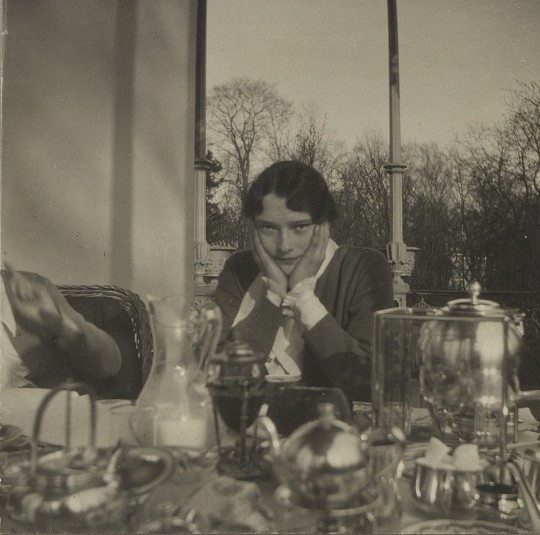

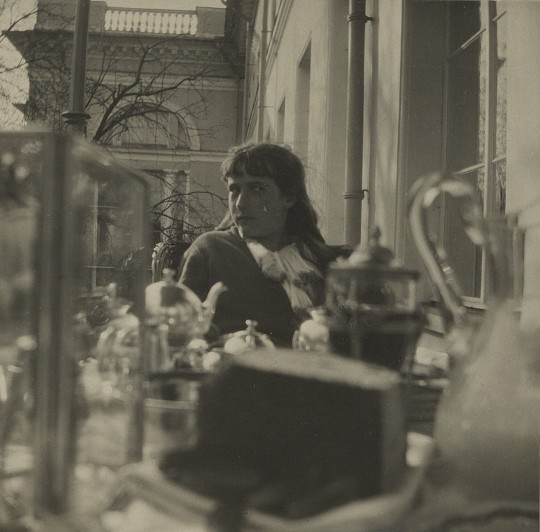

From Tatiana's 1916 diary:
'Monday. 13 June... Ate on the balcony. Wonderful weather. In the afternoon [we] lay out in the sun and picked flowers....'
'22 July. Went to Obednya 4 with Mama. Breakfast on the balcony with the same...'
'Sunday, 7 August... Sat with Mama. Had tea with her on the balcony...'
Sources:
Tatiana Romanov, Daughter of the Last Tsar : Diaries and Letters, 1913-1918, Helen Azar and Nicholas B. A. Nicholason - Westholme Publishing, 2015
Anastasia Nikolaevna's 1916-1917 photo album (version two)
#Olga Nikolaevna#Tatiana Nikolaevna#Maria Nikolaevna#Anastasia Nikolaevna#OTMA#1916#Alexander Palace#balcony#albums#HQ#sources#diaries#Romanov#romanov sisters#imperial russia#my own
112 notes
·
View notes
Text
Top 100 military movies of all time.
1. Saving Private Ryan (1998)
2. Apocalypse Now (1979)
3. Full Metal Jacket (1987)
4. Platoon (1986)
5. Black Hawk Down (2001)
6. Das Boot (1981)
7. The Thin Red Line (1998)
8. Paths of Glory (1957)
9. Hacksaw Ridge (2016)
10. 1917 (2019)
11. Dunkirk (2017)
12. Patton (1970)
13. Gallipoli (1981)
14. We Were Soldiers (2002)
15. Bridge on the River Kwai (1957)
16. The Deer Hunter (1978)
17. The Hurt Locker (2008)
18. Letters from Iwo Jima (2006)
19. Zulu (1964)
20. Black Book (2006)
21. Stalingrad (1993)
22. The Battle of Algiers (1966)
23. The Longest Day (1962)
24. The Bridge at Remagen (1969)
25. Zero Dark Thirty (2012)
26. Jarhead (2005)
27. The Patriot (2000)
28. Tora! Tora! Tora! (1970)
29. Master and Commander: The Far Side of the World (2003)
30. Enemy at the Gates (2001)
31. Glory (1989)
32. The Great Escape (1963)
33. All Quiet on the Western Front (1930)
34. The Wind That Shakes the Barley (2006)
35. Lone Survivor (2013)
36. Kelly's Heroes (1970)
37. The Green Berets (1968)
38. The Alamo (1960)
39. The Messenger (2009)
40. 13 Hours: The Secret Soldiers of Benghazi (2016)
41. 12 Strong (2018)
42. The Last of the Mohicans (1992)
43. The Pianist (2002)
44. Rescue Dawn (2006)
45. The Beast of War (1988)
46. A Bridge Too Far (1977)
47. Behind Enemy Lines (2001)
48. Inglourious Basterds (2009)
49. The Boys in Company C (1978)
50. Red Tails (2012)
51. Battle for Haditha (2007)
52. Courage Under Fire (1996)
53. 5 Fingers (1952)
54. Company of Heroes (2013)
55. The Finest Hours (2016)
56. Windtalkers (2002)
57. Battle of the Bulge (1965)
58. The Nightingale (2018)
59. A Midnight Clear (1992)
60. Attack on the Iron Coast (1968)
61. Sergeant York (1941)
62. Empire of the Sun (1987)
63. The Pacific (2010) - Mini-series
64. The Desert Fox: The Story of Rommel (1951)
65. The Pacific (2010) - Mini-series
66. Enemy at the Gates (2001)
67. The Monuments Men (2014)
68. Days of Glory (2006)
69. Fires on the Plain (1959)
70. The Steel Helmet (1951)
71. Battle of the Damned (2013)
72. Memphis Belle (1990)
73. Crimson Tide (1995)
74. Attack on the Iron Coast (1968)
75. Sergeant York (1941)
76. Empire of the Sun (1987)
77. The Pacific (2010) - Mini-series
78. The Desert Fox: The Story of Rommel (1951)
79. Enemy at the Gates (2001)
80. The Monuments Men (2014)
81. Days of Glory (2006)
82. Fires on the Plain (1959)
83. The Steel Helmet (1951)
84. Battle of the Damned (2013)
85. The Longest Day (1962)
86. The Bridge at Remagen (1969)
87. M*A*S*H (1970)
88. Jarhead (2005)
89. The Patriot (2000)
90. Tora! Tora! Tora! (1970)
91. Master and Commander: The Far Side of the World (2003)
92. Glory (1989)
93. The Great Escape (1963)
94. All Quiet on the Western Front (1930)
95. Platoon (1986)
96. Come and See (1985)
97. Hamburger Hill (1987)
98. The Red Badge of Courage (1951)
99. Born on the Fourth of July (1989)
100. Fort Apache (1948)


#war movies#war history#combat movie#military movie#nilitary#saving private ryan#tom hanks#matt damon#band of brothers#black hawk down#ridley scott#movie club#movie quotes#movie list#the best#repost
37 notes
·
View notes
Text
Save Souls
FIRST SATURDAY: OCTOBER 5, 2024
In her apparition on July 13, 1917 at Fatima, Our Blessed Mother told the three children:
“𝒀𝒐𝒖 𝒉𝒂𝒗𝒆 𝒔𝒆𝒆𝒏 𝒉𝒆𝒍𝒍, 𝒘𝒉𝒆𝒓𝒆 𝒕𝒉𝒆 𝒔𝒐𝒖𝒍𝒔 𝒐𝒇 𝒑𝒐𝒐𝒓 𝒔𝒊𝒏𝒏𝒆𝒓𝒔 𝒈𝒐. 𝑰𝒕 𝒊𝒔 𝒕𝒐 𝒔𝒂𝒗𝒆 𝒕𝒉𝒆𝒎 𝒕𝒉𝒂𝒕 𝑮𝒐𝒅 𝒘𝒂𝒏𝒕𝒔 𝒕𝒐 𝒆𝒔𝒕𝒂𝒃𝒍𝒊𝒔𝒉 𝒊𝒏 𝒕𝒉𝒆 𝒘𝒐𝒓𝒍𝒅 𝒅𝒆𝒗𝒐𝒕𝒊𝒐𝒏 𝒕𝒐 𝒎𝒚 𝑰𝒎𝒎𝒂𝒄𝒖𝒍𝒂𝒕𝒆 𝑯𝒆𝒂𝒓𝒕. 𝑰𝒇 𝒚𝒐𝒖 𝒅𝒐 𝒘𝒉𝒂𝒕 𝑰 𝒕𝒆𝒍𝒍 𝒚𝒐𝒖, 𝒎𝒂𝒏𝒚 𝒔𝒐𝒖𝒍𝒔 𝒘𝒊𝒍𝒍 𝒃𝒆 𝒔𝒂𝒗𝒆𝒅… 𝑰 𝒔𝒉𝒂𝒍𝒍 𝒄𝒐𝒎𝒆 𝒕𝒐 𝒕𝒉𝒆 𝒘𝒐𝒓𝒍𝒅 𝒕𝒐 𝒂𝒔𝒌 𝒕𝒉𝒂𝒕 𝑹𝒖𝒔𝒔𝒊𝒂 𝒃𝒆 𝒄𝒐𝒏𝒔𝒆𝒄𝒓𝒂𝒕𝒆𝒅 𝒕𝒐 𝒎𝒚 𝑰𝒎𝒎𝒂𝒄𝒖𝒍𝒂𝒕𝒆 𝑯𝒆𝒂𝒓𝒕, 𝒂𝒏𝒅 𝑰 𝒔𝒉𝒂𝒍𝒍 𝒂𝒔𝒌 𝒕𝒉𝒂𝒕 𝒐𝒏 𝒕𝒉𝒆 𝑭𝒊𝒓𝒔𝒕 𝑺𝒂𝒕𝒖𝒓𝒅𝒂𝒚 𝒐𝒇 𝒆𝒗𝒆𝒓𝒚 𝒎𝒐𝒏𝒕𝒉 𝑪𝒐𝒎𝒎𝒖𝒏𝒊𝒐𝒏𝒔 𝒐𝒇 𝒓𝒆𝒑𝒂𝒓𝒂𝒕𝒊𝒐𝒏 𝒃𝒆 𝒎𝒂𝒅𝒆 𝒊𝒏 𝒂𝒕𝒐𝒏𝒆𝒎𝒆𝒏𝒕 𝒇𝒐𝒓 𝒕𝒉𝒆 𝒔𝒊𝒏𝒔-𝒐𝒇 𝒕𝒉𝒆 𝒘𝒐𝒓𝒍𝒅.”

2 notes
·
View notes
Text

Dame Laura Knight pictured at the Grosvenor Galleries, London, in 1967. The works, including Land’s End (right) are by her husband, the painter Harold Knight. Photo: John Hodder / Daily Mail / Shutterstock. Artwork: © Estate of Dame Laura Knight. All rights reserved 2023 / Bridgeman Images

Dame Laura Knight, R.A., R.W.S (1877-1970), At the Edge of the Cliff, circa 1917. Oil on canvas. 23 x 28 in (58.4 x 71.1 cm). Sold for £441,000 on 13 December 2022 at Christie’s in London. Artwork: © Estate of Dame Laura Knight. All rights reserved 2023
Dame Laura Knight DBE RA RWS (née Johnson; 4 August 1877 – 7 July 1970) was an English artist who worked in oils, watercolours, etching, engraving and drypoint. Knight was a painter in the figurative, realist tradition, who embraced English Impressionism. In her long career, Knight was among the most successful and popular painters in Britain. Her success in the male-dominated British art establishment paved the way for greater status and recognition for women artists. Via Wikipedia
2 notes
·
View notes
Text

“…Pray the Rosary every day in honor of Our Lady of the Rosary, in order to obtain peace for the world and the end of the war, for she alone can be of any avail.”
(Third Apparition of Our Lady of Fatima – July 13, 1917)
4 notes
·
View notes
Text

Charles E. Burchfield, Clearing Sky, July 13, 1917, watercolor, gouache and pencil on paper
2 notes
·
View notes
Photo






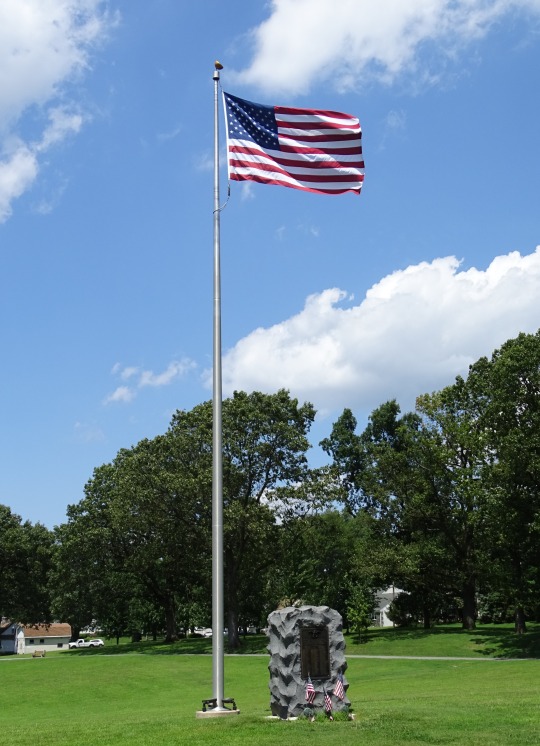



The United States adopted The Star-Spangled Banner as its national anthem on March 3, 1931.
National Anthem Day
In the early years of the republic, there were a few popular patriotic songs, such as "Yankee Doodle" and "Hail Columbia," but there was no national anthem. Today we celebrate the "The Star-Spangled Banner," which became the official national anthem of the United States on March 3, 1931. The song was inspired by a real flag and events that took place surrounding it.
The War of 1812 began in June of 1812. The United States achieved some early victories, but after France and Napoleon were defeated at Waterloo in April of 1814, the British were able to focus more on the war in the United States. After invading Washington D.C. and setting fire to The White House and Capitol in August, the British turned their attention to Baltimore, Maryland.
On September 13, Baltimore's Fort McHenry withstood a 25-hour bombardment from the British Royal Navy. Early on the morning of September 14, soldiers hoisted a large (30 x 42 feet) American flag over the fort. At the time, Francis Scott Key, an attorney who worked in Washington D.C., was on a ship in the harbor of Baltimore. He had been working to negotiate the release of Dr. William Beanes, who had been captured in an earlier battle. Although he was able to secure Beanes' release, the Americans were told they could not leave until the bombardment was over. As Key saw the flag wave over the fort, he wrote the first verse of what would become "The Star-Spangled Banner." At the time he named it "Defense of Fort M'Henry."
Sometime shortly thereafter, Key wrote three more verses. (Today just the first verse is commonly sung, with the fourth verse sometimes being used at formal occasions.) The verses were issued on a broadside by a local printer on September 17, and they were printed in two Baltimore newspapers, the Baltimore Patriot and The American, on September 20. The words were then printed by more papers along the East Coast.
Key set the verses to the tune of an English drinking song called "To Anacreon in Heaven" (also known as "The Anacreontic Song"), which was written in 1775 by John Stafford Smith and originally performed by the Anacreontic Society, a gentlemen's club in England. The song eventually became popular in the United States. Its subject, Anacreon, was an ancient Greek poet known for loving wine. Key had previously used the tune to accompany verses he had written in 1805 about American naval victories in the Barbary War. In fact, some of the wording he had used in the verses for that war were similar in nature to those in "Defense of Fort M'Henry." By one account, it was Key's brother-in-law who noticed the new verses fit the same melody, and convinced him to use it again. In October, Baltimore actor Ferdinand Durang gave the first public performance of the song, and the following month the song appeared in print under the title "The Star-Spangled Banner" for the first time.
The song gained in prominence following the Civil War, because it was about the flag and the flag was increasing as a symbol of national unity at the time. It became a staple of Fourth of July celebrations and other patriotic events. In the 1890s, the U.S. military began using it for ceremonies. In particular, it became the song of the Navy's flag raisings.
Woodrow Wilson signed an order in 1916 to make "The Star-Spangled Banner" the national anthem, but it did not become the official anthem until Congress passed a law fifteen years later. Wilson also asked the Bureau of Education to standardize the song, as there were a few different versions at the time. Five musicians worked on the song, including John Philip Sousa. The new version was first performed on December 5, 1917.
"The Star-Spangled Banner" made its major-sporting-event debut on September 5, 1918, at Chicago's Comiskey Park, during the first game of the World Series between the Chicago Cubs and the Boston Red Sox. The United States was in World War I at the time, and there was some added emotion in the air because a bombing had taken place the day before at the Chicago Federal Building. A military band played the song during the seventh-inning stretch, and players and fans saluted. The song soon began being sung at other baseball stadiums, and then spread to other sports.
On April 15, 1929, Rep. John Linthicum (D-Md.) introduced a bill to make "The Star-Spangled Banner" the national anthem. He had previously introduced such a bill four times before, going all the way back to 1918. As part of his district was in Baltimore, some thought that he was pushing for the bill for himself and for his district more than he was doing it for patriotism and the country. The bill eventually got a hearing before the House Judiciary Committee, and Linthicum presented them with a petition with 5 million signatures, which had been organized by the Veterans of Foreign Wars. He also presented them with resolutions and letters from 150 organizations and messages of support from 25 governors. The House approved the bill on April 21, 1930, and the Senate did on March 3, 1931. President Herbert Hoover signed it the same day and the "Star-Spangled Banner" became the official national anthem of the United States.
Although it has largely been looked upon as a patriotic song about freedom, it has not been without controversy. Key owned slaves for many years, including at the time when he wrote the song, which includes the line "the land of the free." He eventually freed his slaves, and his position was that slaves should return back to Africa. In recent times, some have used the song to protest racial injustice, by staying seated or kneeling when the anthem is played at sporting events. They have seen this as a patriotic gesture, while others have seen it as quite the opposite.
And what became of the actual star-spangled banner that the song was written about? The flag had been sewn by Mary Pickersgill with the help of a few others. After the battle, it was given to George Armistead, the commander of Fort McHenry. He died a handful of years later and his widow, Louisa, received it. It stayed in the family for many years and was rarely seen. In 1878, the Armistead's grandson, Eben Appleton, inherited the flag. He allowed it to be displayed at Baltimore's sesquicentennial in 1880, but then put it in a safety deposit box because he wanted to preserve its condition. He loaned it to the Smithsonian Institution in 1907, and donated it permanently to them in 1912, with the request that it be on display for the public. In the late 1990s, a preservation project was undertaken. The flag can be visited today at the Smithsonian's National Museum of American History.
How to Observe National Anthem Day
There are many ways to celebrate the day:
Read, memorize, and sing "The Star-Spangled Banner."
Visit the original Star-Spangled Banner at the National Museum of American History.
Visit the home where the flag was sewn.
Explore Fort McHenry, where the flag once flew.
Read a book about the "Star-Spangled Banner," such as Marc Ferris' Star-Spangled Banner: The Unlikely Story of America's National Anthem or Marc Leepson's What So Proudly We Hailed: Francis Scott Key, A Life.
Watch a documentary about "The Star-Spangled Banner," or watch a video about the Star-Spangled Banner exhibit.
Watch or listen to noteworthy renditions of the "Star-Spangled Banner."
If you are not from the United States, find out if your country has a national anthem, and learn about it and its history.
Source
#Alamosa#Colorado#Sonoma#St. Helena#Bunny Foo Foo by Lawrence Argent#Turnbull Wine Cellars#Oakville#vacation#summer 2022#2019#original photography#Malvern#Paoli Battlefield Site and Parade Grounds#National Anthem Day#Star-Spangled Banner#3 March 1931#anniversary#US history#DeWitt#US flag#Chicago#architecture#landscape#cityscape#Las Vegas#Paradise#USA#2011
27 notes
·
View notes
